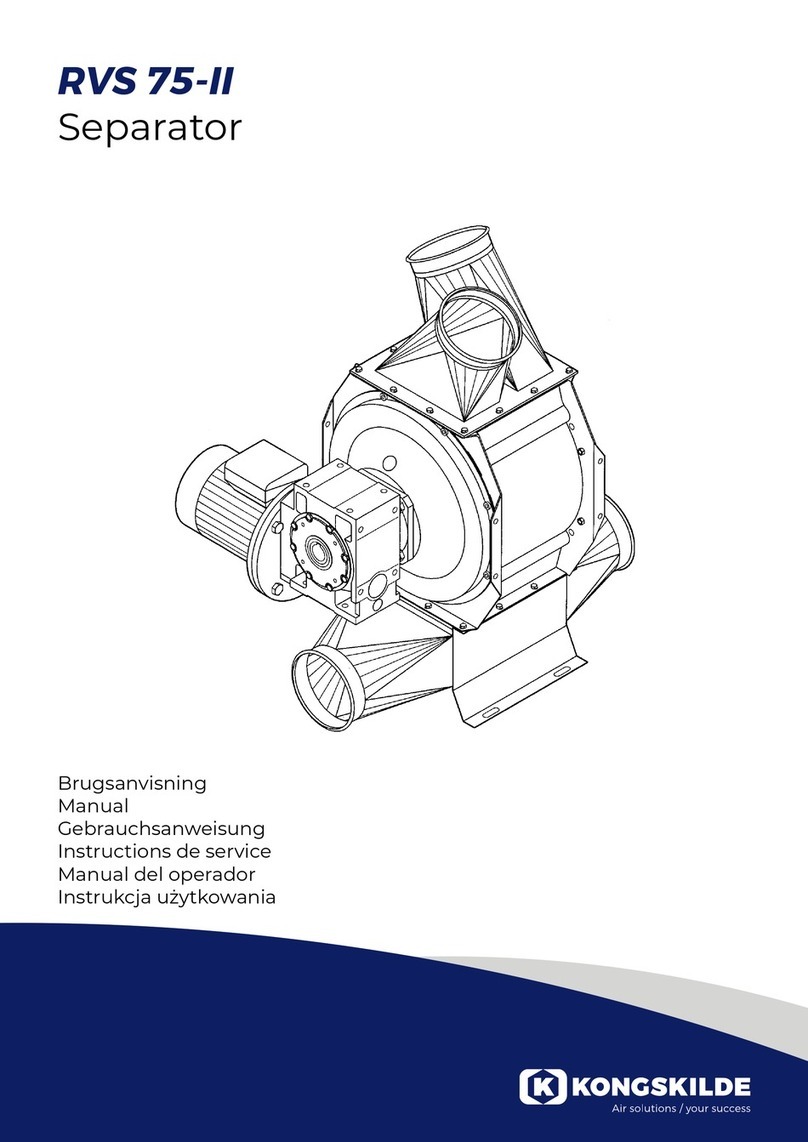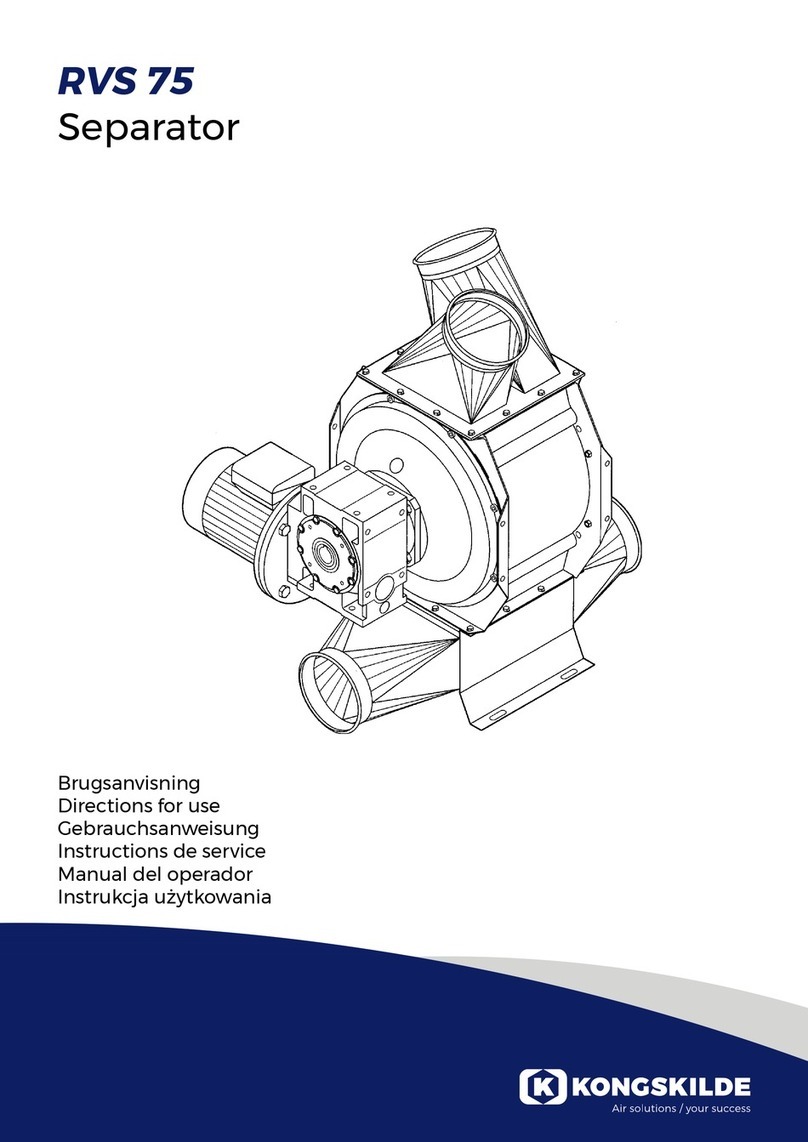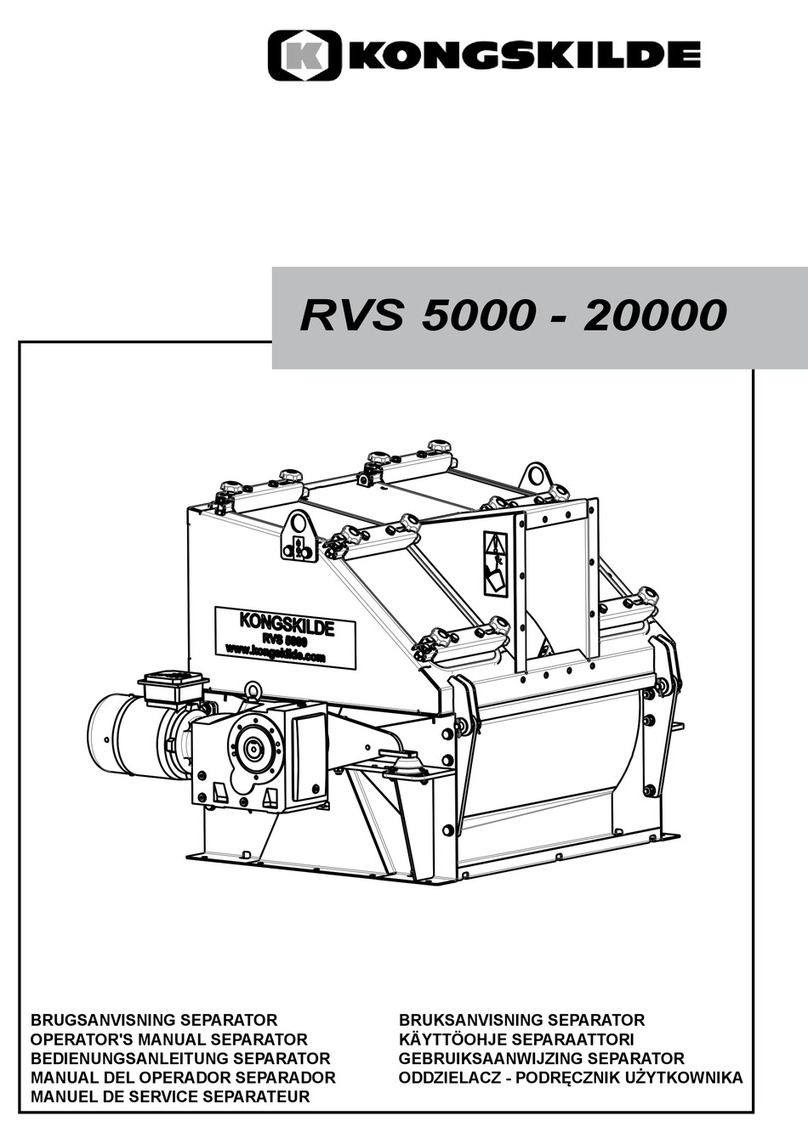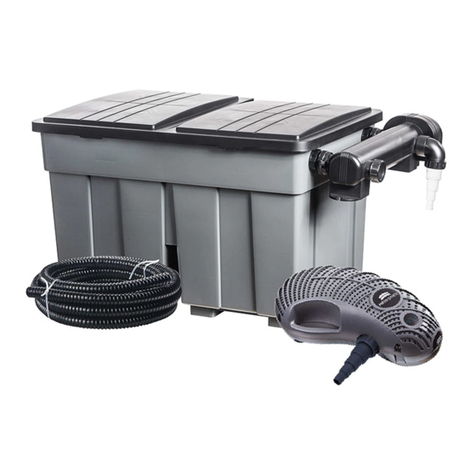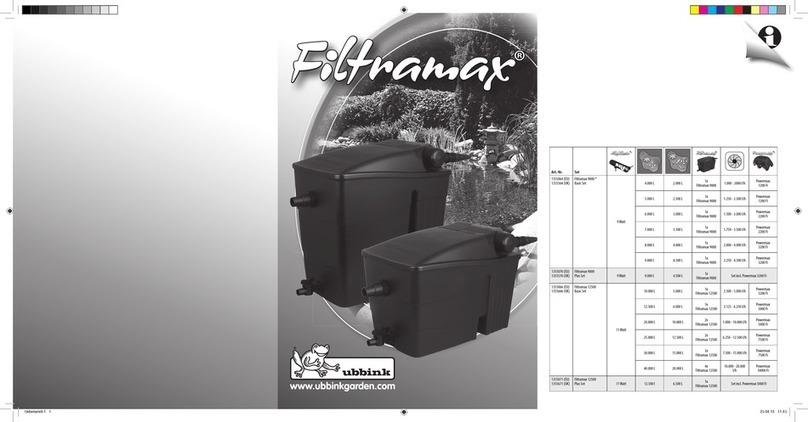
7
Spare adapters can be ordered under the following part
numbers:
Separator type Part no. Shaft diameter
RVS 5000 + 10000 121 102 630 Ø 24mm
RVS 20000 121 102 632 Ø 28mm
Start-up:
During any test operation, it is recommended to ap-
ply the supplied PTFE spray onto the inner side of the
separator, to avoid unnecessary wear of rubber blades
and sealing segments, and to reduce energy consump-
tion of the gear motor.
After commissioning of the system, including adjust-
ment of the sliding dampers according to the table at
the back of this manual, it is recommended to check
if the rotor bearings are kept clean for material. This
is done by lifting the upper part (see section "Service
and Maintenance") and checking the area at the rotor
bearings. If the material can be conveyed through the
system, at a given (low) air velocity, the sliding dampers
should be opened more, in case leaked material tends
to gather around the rotor axle inside the separator.
Prior to start-up, check:
• that there are no foreign objects in the separator
housing or the associated duct system
• that the direction of rotation of the separator's ro-
tor is correct (indicated by the arrow). The motor's
cooling fan and rotor axle in the motor side rotates
in a clockwise direction. See the rotor axle in oppo-
site side if in doubt
• the oil level in the gear
• that the rubber ring in the vent screw is removed
• that all parts, including protective guards, are se-
curely fastened
Operation:
If the separator is clogged or need inspection, the two
inspection hatches on the upper part can be removed.
This is done by loosening the thumb screws, and slid-
ing the pawls towards the centre of the hatch, where
after the hatch can be lifted away. At installation of
the hatch, it is important to ensure, that the gaskets
and pawls are correctly seated before tightening the
thumb screws. In case the hatch does not seal correctly
against the upper part, there is risk of dust pile-up or
other contamination of the separator.
Be careful not to squeeze ngers when handling the
hatches. If the separator is running in overpressure
installation, pay particular attention when handling the
hatches, as there may be a risk of lifting by the air pres-
sure, when they have been loosened. Always discon-
nect overpressure prior to disassembly.
Service and maintenance:
All service, maintenance and repairs should be per-
formed by qualied or trained personnel.
The separator is equipped with replaceable rubber
blades, sealing segments and plastic edges. The rub-
ber blades and segments run close to the separators
housing, and will be worn over time. The lifetime of the
blades and segments are dependent of the conveyed
material. When the rubber blades and segments are
worn, air will slip past the rotor, thereby hampering the
materials from falling out of the separator. When the
capacity has become too low, the rubber blades and
segments needs replacement.
In addition, worn rubber blades may cause foil to build
in the top of the separator. This foil will be held by the
blowers vacuum through the sieve holes, and may
eventually be wrapped around the rotor bearings and
destroy the rotor (see section "Installation").
Replacement of rubber blades and sealing seg-
ments
Always disconnect the power to the separator before
repair and maintenance. The safety switch must be
interrupted and locked so that the separator can not be
started by mistake. Also stop the corresponding blower.
The separator's top part can be raised by loosening
/ removing the pipe connections on both sides of the
separator and loosening the eye bolts (1). Thereafter
the upper part can be lifted by crane and wire or chain
in the lifting eyes (2), see illustration.
When the top part is fully lifted, remove the bolt (3) and
t into the locking position on both sides, after which
the wire or chain can be released.






